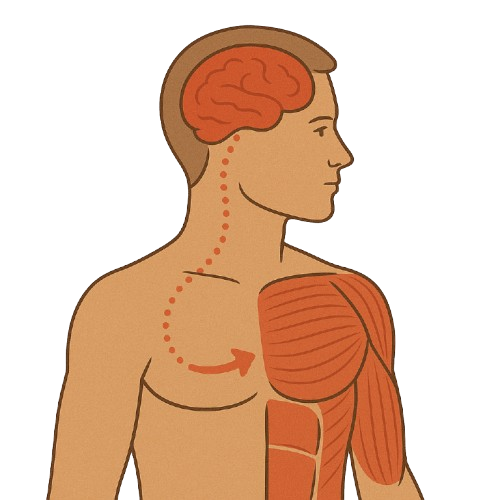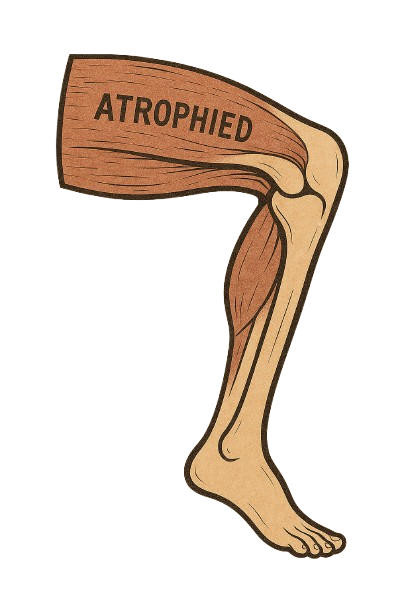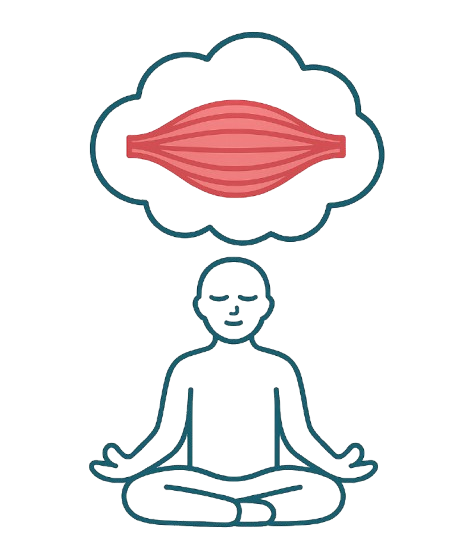Neuromuscular Activation & Mind-Muscle Connection
A Practical Guide for Rebuilding Movement, Strength, and Body Awareness
If you’ve ever felt like part of your body just “doesn’t work” the way it used to — this guide is for you.
Many people living with disability, injury, or neurological conditions experience muscle disconnection: parts of the body that are difficult to feel, move, or control. Over time, these muscles weaken, shrink, or “go quiet.” But that connection can be restored — slowly, gently, and consistently.
This guide will teach you how to reawaken dormant muscles, rebuild the link between brain and body, and take steps toward better mobility, posture, and control
What Is Neuromuscular Activation?
Neuromuscular activation is the process of retraining your brain and nerves to communicate with your muscles. When muscles are unused, overcompensated for, or disconnected from the nervous system, the brain stops “prioritizing” them. This is called inhibition
Neuromuscular activation teaches the brain:
“This muscle is still needed. Let’s switch it back on.”
What Is the Mind-Muscle Connection?
The mind-muscle connection is your ability to consciously feel and control a muscle while moving it. Instead of just “going through the motion,” you learn to focus your awareness on one muscle at a time — even if it’s weak or numb.
Over time, this mental focus can:
Reactivate muscle fibers
Improve balance and posture
Reduce overcompensation from other areas
Help prevent falls, joint pain, or fatigue
Why Do Muscles Go Dormant?
You’re not imagining it. Muscles can weaken or switch off due to:
Long periods of immobility (bed rest, wheelchair use, injury recovery)
Neurological conditions like stroke, multiple sclerosis, spinal cord injury, cerebral palsy, or neuropathy
Repetitive movements or poor posture that overload some muscles while others shut down
Protective response from pain, trauma, or surgery
Over-reliance on mobility aids without retraining underlying muscle control
Can You Re-Activate Dormant Muscles?
Yes — but it requires:
Awareness (learning how to feel what your body is doing)
Consistency (daily or weekly practice)
Small wins (don’t expect a full contraction at first — look for a twitch, a flicker, a change in tension)
This is called neuroplasticity — your brain’s ability to rewire and form new connections, even after injury or years of disuse.
How to Begin Rebuilding the Connection
1. Start With Stillness and Awareness
Sit or lie down. Close your eyes. Think about the muscle you want to activate — your quad, your glute, your foot. Ask:
Can I feel this muscle?
Can I move it at all?
What happens when I tighten it gently?
Even imagining the movement sends signals to your brain. This is where it begins.
2. Use Tactile Feedback (Touch + Tap)
Lightly tap, rub, or massage the area to stimulate nerves.
Touch increases blood flow
Your brain registers “something is here”
Try tapping while attempting a movement (e.g., tapping your thigh while squeezing your quad
3. Visual Feedback (Mirror Work or Videos)
Look in a mirror and watch your body as you move.
Even if the movement is small, watch the muscle you're trying to activate
You can also gently place your hand on the muscle while looking — feel for any tension
4. Micro-Movements & Isometric Holds
These are small, slow movements focused on one muscle:
Glute squeeze: Tighten your buttocks while seated or lying down
Quad squeeze: Try pushing your knee down into a mat
Scapular pinch: Gently pull your shoulder blades together while sitting
Toe lift: Attempt to lift just your toes while keeping your heel down
Even if nothing moves at first — the intention matters.
5. Use Resistance Bands or Gentle Load
Once you feel a flicker of control, introduce very light resistance:
Mini band glute bridges
Seated leg lifts with a towel loop
Arm raises using a light water bottle
Add load slowly — the goal is activation, not strain.
6. Repetition With Rest
Do 10 gentle reps daily — with full attention.
Rest is just as important
The nervous system needs downtime to store what you practiced
7. Guided Verbal Cueing
If you have a therapist, support worker, or even a family member, ask them to use phrases like:
“Squeeze here”
“Try to lift slowly, hold, and release”
“Feel your heel push into the ground”
Tools That Help
Massage balls or vibrating tools to stimulate nerves
Resistance bands (very light)
Mirror for body awareness
TENS machine (with professional guidance)
Visualisation apps or guided breathing to improve brain-body focus
Realistic Progress Signs
You start to feel a muscle you couldn’t before
You can hold a contraction for 1–2 seconds
You notice better posture, less fatigue, or reduced shaking
You need less compensation from other limbs
Movements feel smoother or more “connected”
How National Disability Compass Can Support You
We offer:
Guided neuromuscular activation routines
Help connecting with Exercise Physiologists or Physios
Personal support to practice movements at home
Goal tracking, body awareness check-ins, and emotional support
Help explaining this process in NDIS reviews and funding goals
You’re Not Alone — We Can Guide You
Many people have gone years believing a muscle “just doesn’t work.” But often, it’s just forgotten — not gone.
It takes time, focus, and care — but the brain and body remember.
Let’s rebuild that connection, one movement at a time.





